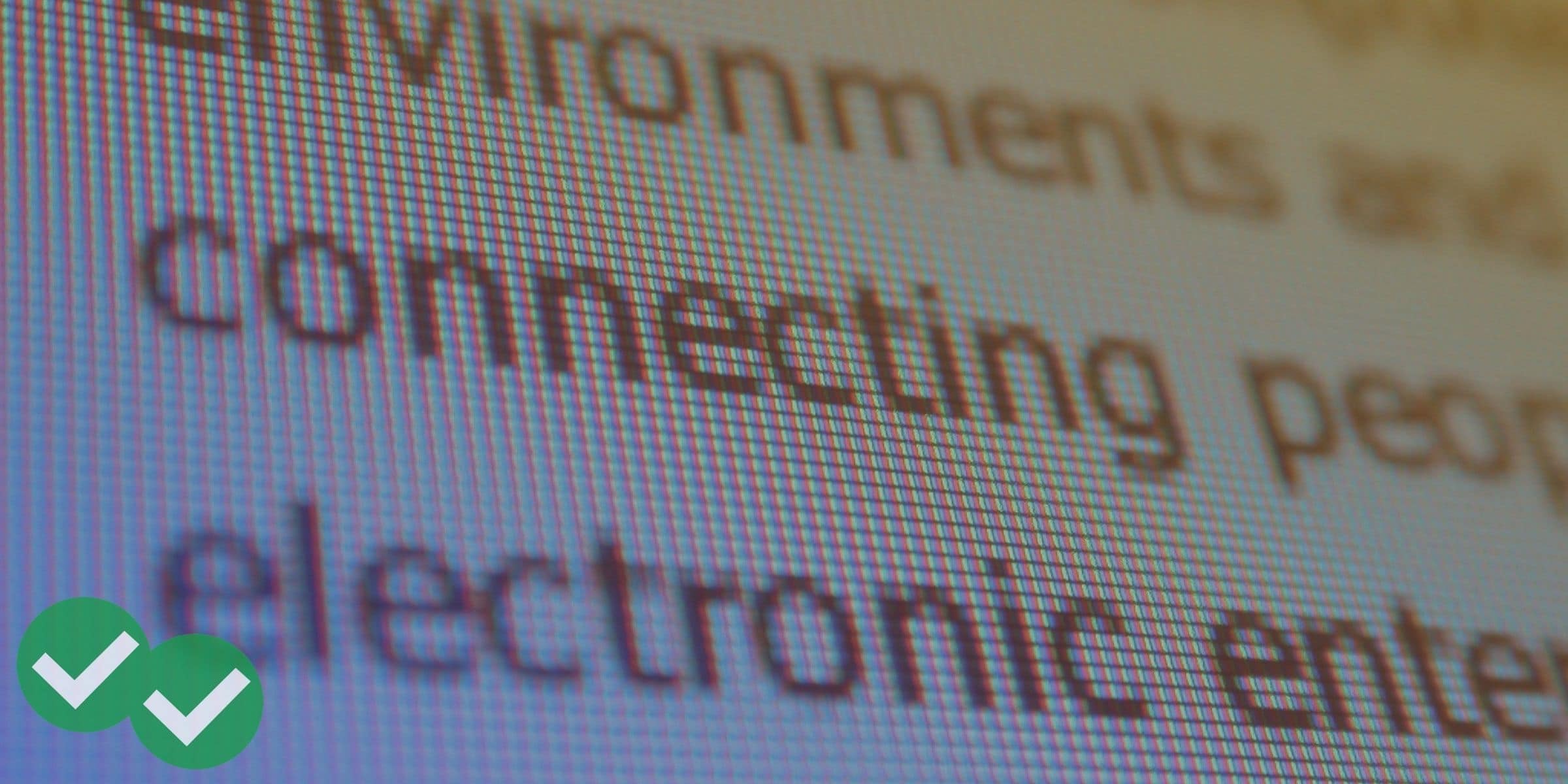
The TOEFL Listening section contains seven different question types. In this post, you’ll learn what each type is and be given an example question and explanation. Just click each question type below to jump down to a detailed description. For more information, click here for a complete guide to TOEFL Listening!
The 7 TOEFL Listening Question Types
- Detail (understanding specific pieces of factual information)
- Main Idea (identifying the primary purpose of a conversation or lecture)
- Inference (recognizing implied information)
- Organization (recognizing the relationship between different pieces of information; almost exclusively used for lectures)
- Attitude (inferring the speaker’s attitude or opinion)
- Function (understanding the reason a specific thing is said)
- Categorizing (organizing ideas from the audio into categories based on their similarities and differences)
The kinds of questions that the TOEFL Listening section asks are somewhat similar to those in the Reading section (to review those, check out The TOEFL Reading Section).
Example TOEFL Listening Questions and Answers
For an in-depth look at each question type, with an example question and an answer explanation for each type, click to expand each of the tabs below.
Detail
Detail questions are roughly equivalent to the factual questions from the TOEFL Reading section. They deal with specific facts from the Listening section, but they are not usually as specific as detail questions in the Reading section. Because you don’t have the option of listening to the recording a second time, you will depend on the information that you wrote in your notes. For this reason, detail questions in the Listening section rarely deal with very specific information like numbers or names. Instead, they focus on those facts that you would recognize as important as you listened to the recording.
Detail questions are usually in harmony with the main idea of the recording. Before you mark a final answer, revisit the main idea of the recording and make sure that your answer choice makes sense considering the main idea.
As you choose your answer choice, be careful not to fall into the trap that false friends may set for you. False friends are answer choices that use key words from the passage in a way that appears to be correct, but isn’t. They may directly contradict the information in the passage, or they may simply not make sense.
Example question and answer (click to expand)
Let’s check out an example of a false friend using a question from this sample audio conversation from Magoosh TOEFL. Click that link to hear the conversation, and then check out this question:
What problem does the student have?
(A) He received another student’s tuition statements.
(B) He received a notice that his payment was late.
(C) He forgot to pay tuition during a holiday week.
(D) He has been barred from attending classes.
Answer and Explanation
In this question, (A) is a false friend, based on a real statement from the audio clip where the student says “I’ve received two separate statements about my tuition payments in the last week, and they seem to…it looks like they kinda CONTRADICT each other.” This indicates that the student did get an extra tuition statement, and that the extra statement seems wrong in some way. Both of these ideas would be consistent with receiving another student’s tuition statement, as indicated in A. But if you listen to the greater context in the audio track, the student actually got an additional, seemingly wrong statement for entirely different reasons!
Actually, this isn’t the only false friend in the answer choices for this detail question. Can you find other false-friendliness here, and can you find the right answer? If you’re not sure, feel free to check out Magoosh’s text and video answer explanations for this question.
Main Idea
Every listening sample will begin in the same way: with a main idea question. These questions ask you to identify the main point of the lecture or conversation. They usually take one of the following forms:
- Why does the professor ask to see the student?
- What problem does the student have?
- What is the main idea of the lecture?
- What subject is the professor mainly discussing?
When you see this kind of question, remember that you should only be concerned with the main idea of the passage. Supporting ideas, examples, and counter-examples will not be correct answers. Just because an answer choice is true doesn’t mean that it’s the correct answer. It must be the most important of all the correct answer choices.
But there’s one important exception to make: if the question asks for the main purpose of a conversation (like in the first example given above), that might only be talked about in the beginning of the conversation. That’s because sometimes conversations change topic, and therefore what was originally the purpose of the conversation changes slightly. So, for example, a student might go to an administrative office to ask about where they can park their car on campus, but then the conversation might change to the application process for receiving a parking permit. Now, the purpose of that conversation is for the student to find a place to park their car on campus, although a lot of the dialogue is about an application process.
In either case—in main idea or main purpose questions—the answer will often be in the very beginning of the recording, although the wording in the answer choice will be slightly different from that in the sample. For example, the wording in the question may be more abstract or general than the wording in the lecture.
Example question (click to expand)
For a common example of a main idea TOEFL Listening question, see the first question in Rachel Kapelke-Dale’s free TOEFL practice set, right here on the blog.
Inference
Inference questions will usually look very similar to one of these examples:
- What can be inferred from the Professor’s discussion of X?
- What will the student probably do next?
- What is implied when the speaker says this? (replay a short segment)
Sometimes, the question will replay a sentence from the recording for you; other times, you will need to rely on your notes and memory to answer the question. Unfortunately, your notes may not always be much help, since you can’t take notes on information that isn’t there. So when you’re answering inference questions, keep these pointers in mind.
- Never pick an answer that contradicts a main idea from the passage.
- As you’re listening, pay attention to the speaker’s tone.
- The correct answer will probably use some key words not found in the recording.
- The implication is very similar to what’s directly said. You do not need to make a large logical jump.
That last point is the most important one. Even though we call these questions “inference” questions, they’re very, very similar to detail questions. The information is in the recording—never draw from your own thoughts or experiences if they’re not also spoken about in the recording.
Example question and answer (click to expand)
For an example of an inference question and the audio clip associated with it, let’s again revisit this example conversation audio clip, taken from Magoosh TOEFL. Then, take a look at the associated inference question below:
What can be inferred about the student?
(A) He wants to stop getting notices from the college.
(B) His primary concern is being allowed to attend classes.
(C) He wants to leave the tuition office quickly.
(D) He is worried about accidentally paying tuition twice.
Can you see what the correct answer is? You can check your work by looking at the text and video explanation for this question. (And again, these example questions come from Magoosh TOEFL.)
Organization
Organization questions occur almost exclusively in lectures and are of three basic types. The first type will deal with the overall organization of the lecture; the second will ask you about the relationship between two (or more) parts of the lecture; and the third is similar to a function question, but deals with a whole sentence.
Click here to learn more about the first question type (organization)
If you learn to notice how the information is organized automatically as you listen, then answering overall organization questions will be a breeze. When the overall organization is in question, these are some of the most likely ways that the lecture may have been organized.
- Likelihood – This type of organization is most often used when the lecture deals with different theories or possibilities. The speaker will begin with the least likely and proceed to the most likely (more rarely, s/he may begin with the most likely and move toward the least likely).
- Complexity – The speaker may list the ideas in the lecture from simplest to most complex in order to make the more difficult information more accessible.
- Chronology – Lectures in history are often (but not always) organized chronologically—that is, beginning with the first event that occurred and moving up to the one that occurred most recently.
- Comparison – This scheme of organization groups all the similarities among the items being discussed, then groups all the differences (or the other way around). The professor’s thesis statement, or statement of the main idea of the lecture, will likely give you a clue when a comparative organization is going to be used.
- General to specific – Very often, a lecture will start out with the professor talking about a general concept, and then they will start talking about some more specific details about how that idea works and examples of it in real life.
- Cause and effect – Don’t expect this to be so simple as “A happens, then B happens.” Instead, you might hear about some phenomenon, and then the professor will talk about the three main causes for that phenomenon. Or, conversely, you might hear about one phenomenon and then three different effects it has.
There are others, too, and these structures can also be combined. For example, you might have a comparison structure, but one of the parts in the comparison is more important than others, so it has a general to specific structure within the comparison structure. This makes it quite tricky, sometimes, to hear the main organization. Keep in mind that the overall organization should include all parts of the lecture: there may be a cause-and-effect relationship that doesn’t relate to the rest of the lecture, for example, and that would not be the main organization.
Click here to learn more about the second question type (relationships)
The second kind of organization question is the one that deals with the relationships between various parts of the lecture. For example, the test may ask you, “How does the professor explain his theory about the causes of the war?” To answer this question, you would need to look back at your notes and find the information that is relevant to that question. These questions are about the smaller relationships, rather than the overall structure.
Click here to learn more about the third question type (whole sentence)
Finally, we have the function-type organization questions. These will ask you about whole sentences that provide a clue to how the professor is structuring the lecture. For example, the professor will sometimes go off topic, give a personal example to clarify the information, or give information that is redundant. Often, s/he will announce this by saying something like “You don’t need to write this down” or “Let me show you what I mean.” To answer the third type of organization question correctly, you need to pay attention to these cues. In particular, pay attention to any time the professor appears to be digressing (going off topic), as you may be asked about the digression later.
Example question and answer (click to expand)
Click here to listen to a lecture from a psychology class.
Now, click here to view an organization question associated with the lecture.
And click here to check your answer and view the text and video answer explanations.
Attitude
Attitude questions, like function questions, often deal with information that’s given not just by what the speaker says, but also by how they say it. They will ask you about the speaker’s attitude—that is, what information the speaker’s intonation and word choice give you about the speaker’s feelings and relationship toward the subject s/he’s discussing. Attitude questions may also ask you about feelings that are directly stated or strongly implied, as in the following example.
Example question and answer (click to expand)
In this conversation, a professor and a student are discussing the student’s difficulties in his class, and what the student should do to succeed in the professor’s class. (NOTE: This question comes from Magoosh TOEFL. If you like what you see, consider subscribing, or check out our free trial to see more. 🙂 )
AUDIO OF THE RELEVANT PART OF THE CONVERSATION
Transcript of the audio
Professor: Yeah, and I actually did mention that in class. You know, you really should have checked with your classmates before coming to me.
Student: Well, I’ve always studied alone before.
Professor: I don’t think students should be studying solo in any class. It’s always better to study with a partner—or, a group. It can really help avoid confusion.
Student: Yeah, I’ve really had trouble keeping up in class so far. I think I’ll join a class study group in the library tonight.
Professor: Yeah, please do. Your classmates can probably help you more than I could. You know, when it comes to organizing notes, getting together a good study strategy, eh—that sort of thing.
What is the professor’s attitude toward study groups?
(A) Professors should make an effort to organize their students into study groups.
(B) They are a very important resource for exam preparation.
(C) Students should create groups at the start of the semester, before exams begin.
(D) Students in groups can divide the work of reviewing so that it is faster.
Answer and Explanation
The trick in this question is to keep the context of the conversation in mind. The student is visiting the professor because she is having a hard time in the class, and asks the professor for advice on how to succeed. The professor then mentions study groups, and suggests that the student can benefit from studying in a group instead of by herself. So we know that the professor must think that study groups are an important resource for success, and therefore also for exam preparation. So answer choice (B) is the right answer.
As you practice, you will find that some attitude questions deal with more simple attitudes, as approval or disapproval. Others, however, may deal with more complex relationships like degree of certainty, irony, excitement, and confusion. The best way to practice attitude questions is to listen to as much natural speech as you can and pay attention to how intonation and vocal quality change with the speakers’ moods.
For example, in some cases the speaker may imply an attitude of irony or disapproval by exaggerating his or her intonation. If the speaker speaks haltingly (pauses frequently), s/he may be confused or unsure of what s/he is saying. We usually show excitement by becoming very animated, a change that will also be noticeable in the sound of the speaker’s voice. With practice, you will learn to recognize these nonverbal cues and combine them with the words that the speaker uses to understand exactly how the speaker feels.
Function
Function questions test your understanding of pragmatics, or the implied meaning that we get from context. They often will ask about a very particular part of the passage, even just a single word. The question will replay a segment of the recording that contains the topic of the question, and then will replay just the topic. There will be no transcriptions provided for any part of these questions—all the information will be provided through listening.
Function questions do not deal with the meaning of the words the speaker says, but rather with the information that is implied by how the speaker says them. Let’s take a look at a (partial) list of the general rhetorical functions you may need to be able to identify.
Click here for a list of the rhetorical functions
Sarcasm/irony
Irony occurs when the speaker says the opposite of what s/he means. You can generally tell when something is meant ironically because the literal meaning of the sentence wouldn’t make sense in context. Sarcasm is a particular kind of irony that is most likely to occur in a conversation. Usually when speakers are being sarcastic, they will use exaggerated intonation to show this. For example, you may hear someone say “That’s just GREAT,” meaning that whatever they’re talking about is terrible.
Redirection
A speaker may use redirection to change the topic or the direction of a conversation. Professors may use it in lectures to introduce a new point or to get back on track after getting off topic. Common redirect words include “OK,” “so,” and “alright.”
Correction/clarification
Sometimes, professors in lecture will make a mistake and then have to correct themselves. Any correction is a likely topic for a function question. A clarification is when the speaker did not make a mistake, but still wants to add more information to make sure the listener understands. The phrases used to introduce corrections and clarifications are sometimes similar, so watch out for these ones, and use context and intonation to help you decide what the speaker means. Sentences that contain corrections and clarifications often begin with phrases like “What I meant was…,” “I mean”, “That is,” and “Or rather.”
Implied/indirect questions and requests
An implied or indirect question is when the speaker either asks a question, expecting the listener to answer a slightly different question, or makes a statement, expecting the listener to understand that he is actually asking a question and expects an answer. For example, imagine someone saying “I wonder if you could open the window.” The speaker knows you can open the window, and s/he isn’t actually asking if you can open the window. Instead, he’s asking if you are willing to. Another example would be a student who tells his professor, “You’re probably too busy to meet with me, aren’t you?” The student is actually requesting that the professor meet with him/her.
Rhetorical questions
A rhetorical question is the opposite of the question we just talked about. It occurs when the speaker asks a question, not expecting an answer. Instead, s/he asks the question in order to make a point. Think of a parent who, when angry at their teenage child, asks, “Just who do you think you are?” Of course both people know who the child is, but the parent asks this to make the point that the child is acting inappropriately.
Example question and answer (click to expand)
Click here to listen to a lecture from a psychology class.
Now, answer this question:
What does the professor mean when she says this?
(A) Traumatic experiences feel like they take a long time to reach completion.
(B) Traumatic experiences can haunt the memory and never leave a person’s mind.
(C) Traumatic experiences sometimes occur in repetitious patterns in people’s lives.
(D) Traumatic experiences can seem more debilitating than they really are.
Categorizing
Categorizing questions ask you to sort key items from the lecture according to certain criteria. Some of the answers will usually be stated, whereas others will be implied, and the categories will usually differ from the most obvious ones mentioned in the lecture. Let’s take a look at an example.
Example question and answer (click to expand)
First, you will listen to part of a lecture from a university classroom. When you’re ready, listen to this five-minute lecture.
The categorizing question for this lecture is in the form of a chart. Here are the instructions:
The professor describes various features of EMDR compared to other forms of therapy. For each of the following, indicate whether it is a feature of EMDR or of another form of therapy.
For each item, check the appropriate box.
| EMDR | Other Therapy | |
|---|---|---|
| Focuses more on the mental state of patients than on bodily responses | ||
| May be slow in cases of multiple levels of trauma | ||
| Involves moving the eyes back and forth while looking at a beam of light |
Answer and Explanation
By looking at this chart by itself, you may assume that the lecture is about both EDMR and other kinds of therapy. However, the lecture focuses mainly on EDMR. The best approach to this question is to determine which statements are true about EDMR. Since you can only check one box for each statement, the ones that are not true for EDMR must be true for other therapies.
There are a few different types of categorization charts you might see on the TOEFL. The categorization chart above is one. Beside that, you might see charts that ask you to do any of the following:
- Indicate whether the given statements are true or not (similar to the chart above, but with “yes” and “on” in each heading instead of topics)
- Put events in order from first to last
- Connect a few key terms to their definitions
These questions have slightly different appearances, but you do basically the same thing. To answer these questions correctly, it helps to have a bit of strategy. Read the chart twice: once to see all of the information, and a second time to fill in the answers. When you are going through and filling in the answers, start with the ones you’re most confident in. Save the stuff you’re unsure of for last. Doing that makes it easier to stay focused on one piece of information at a time and helps to build a bit of confidence.
Watch our explanation video for the answer to the question above and let us know what you think in the comments below!







Leave a Reply